|
Listen to this article  |
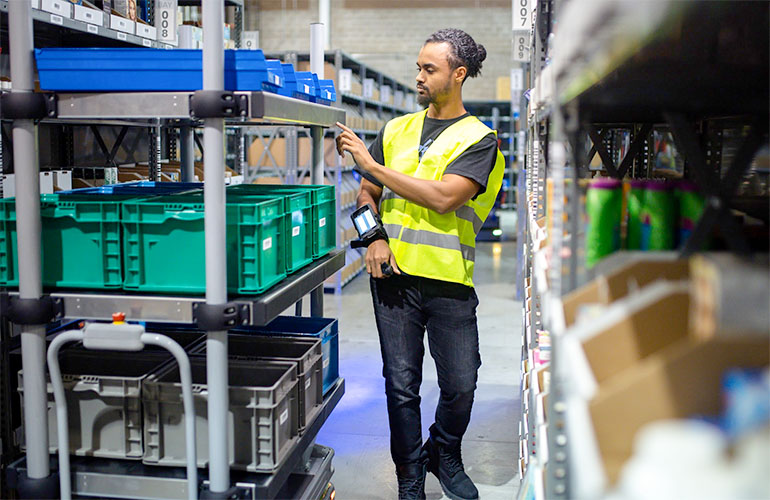
The Pyxis solution from IAM Robotics is a complete person-to-goods workflow automation solution. | Credit: IAM Robotics
I recently reported on IAM Robotics launching an automated solution designed for person-to-goods (P2G) warehouse workflow. The company is entering a new chapter focused on the hottest segment of autonomous mobile robot (AMR) applications and one that has already been proven through the efforts of companies like Locus Robotics and 6 River Systems.
The rebirth of IAM Robotics is significant because it is the latest chapter in what was a valiant attempt to commercialize mobile manipulators. It’s also a poignant lesson in failed market fit and knowing when to pivot as a robotics startup.
A classic garage startup
IAM Robotics started in Vlad Altman’s Pittsburgh basement and quickly moved to a local township garage building to model a working warehouse. Co-founder Tom Galuzzo had a passion for mobile robots and a robotics degree from Carnegie Mellon University. At the time, the idea of putting a robot arm onto a mobile platform and using it to pick items from shelves was one of the remaining “holy grail” challenges in robotics.
It was also a year after Amazon’s historic acquisition of Kiva Systems for $775 million – the potential for robotics in warehousing was in the spotlight. It took until 2015 for IAM Robotics to raise its first seed round and introduce its Swift robot on the promise of automated picking in the warehouse.
This was when IAM Robotics first appeared on my radar as an innovative solution for goods-to-person workflows in the warehouse. At the time, I was leading product management for the mobile robot business at Adept Technology, and no other vendor in the market was commercializing a mobile manipulator for warehousing applications.
The company was pushing the boundaries of robotics technology, simultaneously solving the problems of vision-guided mobile manipulation and developing strategies for AMR perception, obstacle avoidance, and the challenges of battery-supported operations.
Using mobile manipulators to pick from shelves
What immediately struck me about the Swift robot was that it didn’t pick up individual items from bulk SKU bins stored in the warehouse. Rather, it worked by picking from stock that was stored in organized rows on a shelf, not unlike what you might see in the front-of-house retail space of your corner drugstore.
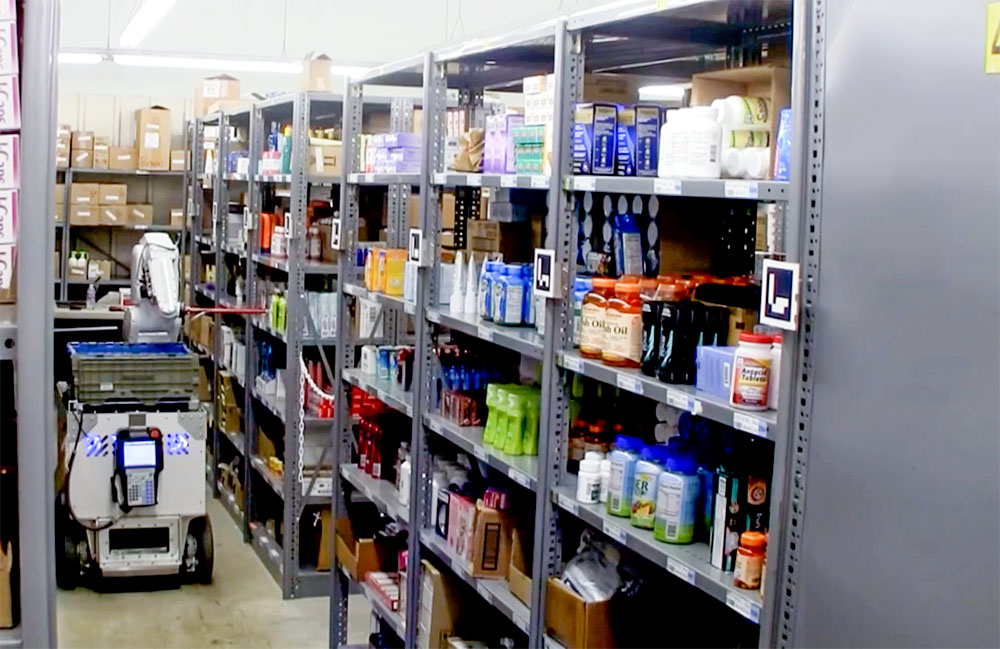
The original IAM Robotics Swift mobile manipulator autonomously picked items from neatly organized warehouse shelves. | Credit: IAM Robotics (Wayback Machine Archive)
I had never seen a warehouse space with products organized in neat product rows like this, and that was my first red flag about the viability of Swift. To make the system work, Swift required a 3D model of each product SKU. With the 3D model, the robot’s vision system could then identify the item on the shelf and determine the correct pose of the robot to acquire the item.
The company developed a novel 3D item scanning station called “Flash” that would ingest a new product SKU, image it and add it to the 3D library of items that Swift could now handle.
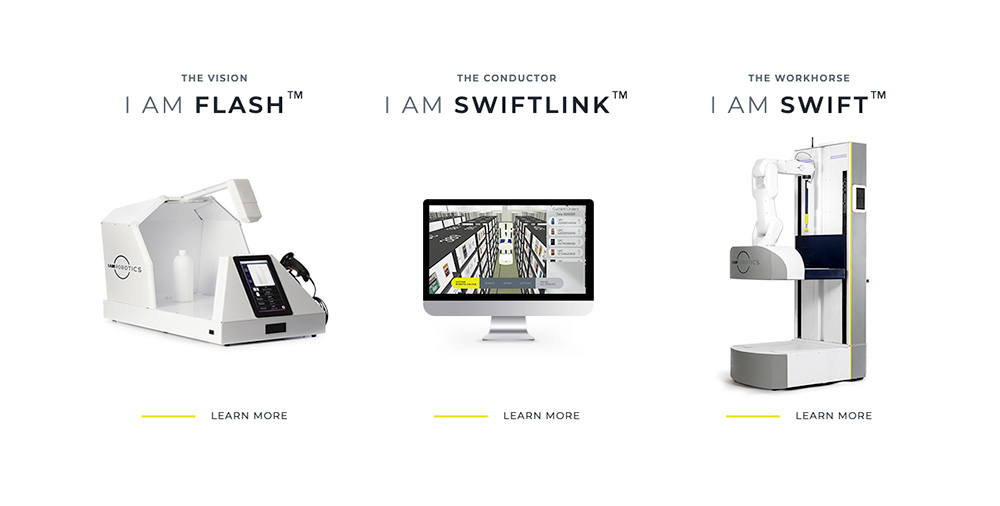
IAM Robotics originally developed a complete solution that included a 3D scanner, enterprise software and a warehouse picking robot. | Credit: IAM Robotics (Wayback Machine Archive)
To function properly, Swift also had to autonomously handle product replenishment, putting items onto the warehouse shelves in those neat and organized rows. The idea to replenish the shelves autonomously looked great on an ROI spreadsheet, but Swift wasn’t fast enough (compared to human warehouse associates) at replenishing the shelves in the real world. It also couldn’t easily work side-by-side with human associates in warehouse aisles due to its working dimensions.
Another concern for the viability of Swift was the target segment of “warehouses with highly organized shelves” was just too small. The majority of warehouses and distribution centers store bulk items contained in bins or boxes on the warehouse shelves. Bulk storage is simply the most efficient and cost-effective method of using precious warehouse space.
Lastly, the inability of Swift to pick items from bins (the “holy grail” application) ultimately sealed its fate. In the warehouse, humans are very adept at pulling individual items from bulk storage. This realization led the company to rethink its portfolio.
Creation of an AMR platform
Fast forward to 2020, and IAM Robotics made the first pivot with the design and launch of its Bolt AMR, using all of the knowledge and experience gained from engineering Swift. The goal of Bolt was to offer a standard AMR base that could be deployed into any AMR application. This was a competitive market with a large number of established vendors, including companies like OMRON, Fetch Robotics, MiR, OTTO Motors and others.
Unfortunately, this was also the start of the pandemic. While e-commerce was exploding in popularity (along with the demand for automated support for warehouse labor shortages), there were also hundreds of AMR competitors on the market with standard AMR platforms. The novel innovation for Bolt was a swappable battery that could be quickly changed with minimal downtime of the AMR. But it wasn’t enough.
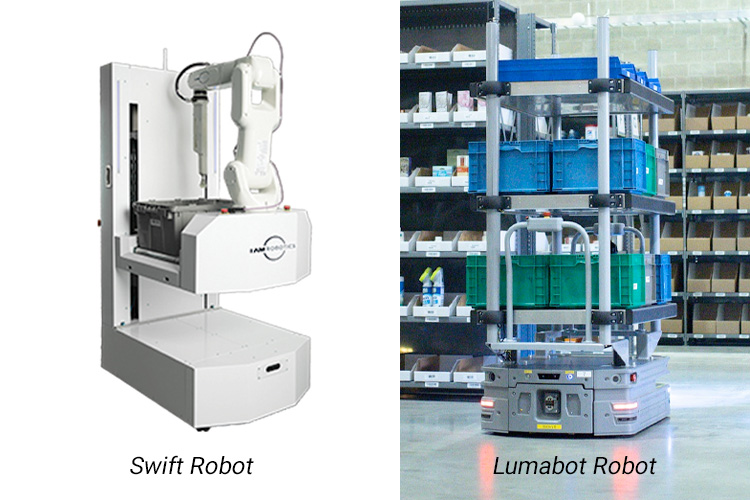
IAM Robotics developed two AMRs, the G2P Swift (left) and new P2G Lumabot (right). | Credit: IAM Robotics
In 2021, the company restructured, hired CEO Lance Vandenbrook, let go of many of the original mobile manipulation-focused engineering teams, hired the necessary enterprise software engineering team and entered a self-imposed “stealth mode” to retool.
Person-to-goods workflow is the hot application segment
The company recently re-emerged with a new person-to-goods (P2G) warehouse workflow, leveraging all of the intellectual property from its early days in AMR development and adding a new, robust, fully featured enterprise workflow layer on top.
The new Pyxis (pronounced pix-us) solution is designed to be competitive with existing P2G solutions such as Locus Robotics and 6 River Systems. The focus for IAM Robotics has changed from being a mobile robotics company to a warehouse workflow company, managing the tasks of both human associates and mobile robots.

The new Lumabot is designed specifically for person-to-goods automation in a warehouse. | Credit: IAM Robotics
The company launched a new AMR called Lumabot, taking the Bolt AMR base and outfitting it with a payload of fixed shelves and pick/put-to-light guides. Human associates interface with the solution through a wearable that communicates customer orders, quantity and SKU locations.
Lumabot robots move autonomously to the pick location where humans pull individual items from bins and place them in outgoing customer order bins. The Lumabots then take assembled customer orders to pack out stations for final consolidation, packaging and labeling.
The Pyxis solution manages the operations of all of the human associates in the warehouse, together with the fleet of Lumabots to manage customer order picking and consolidation. The system is designed to be deployed in either greenfield or brownfield opportunities and offered as a robots-as-a-service (RaaS) business model.
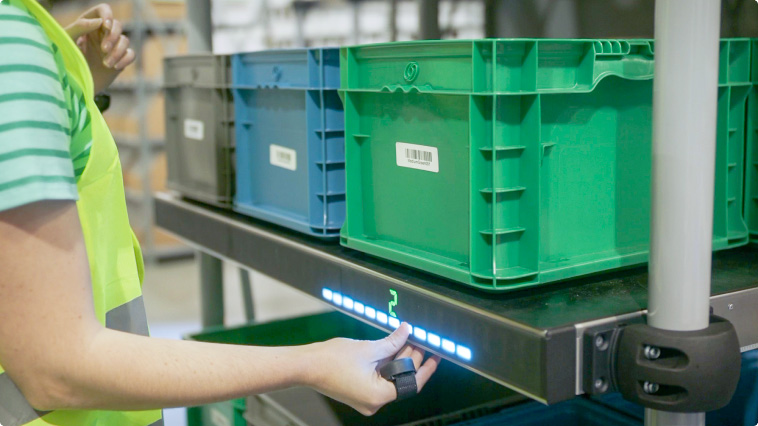
The Pyxis solution directs the human associates with information about which item to pick and where to place the item for a customer order. The Lumabot then moves items to a pack-out station. | Credit: IAM Robotics
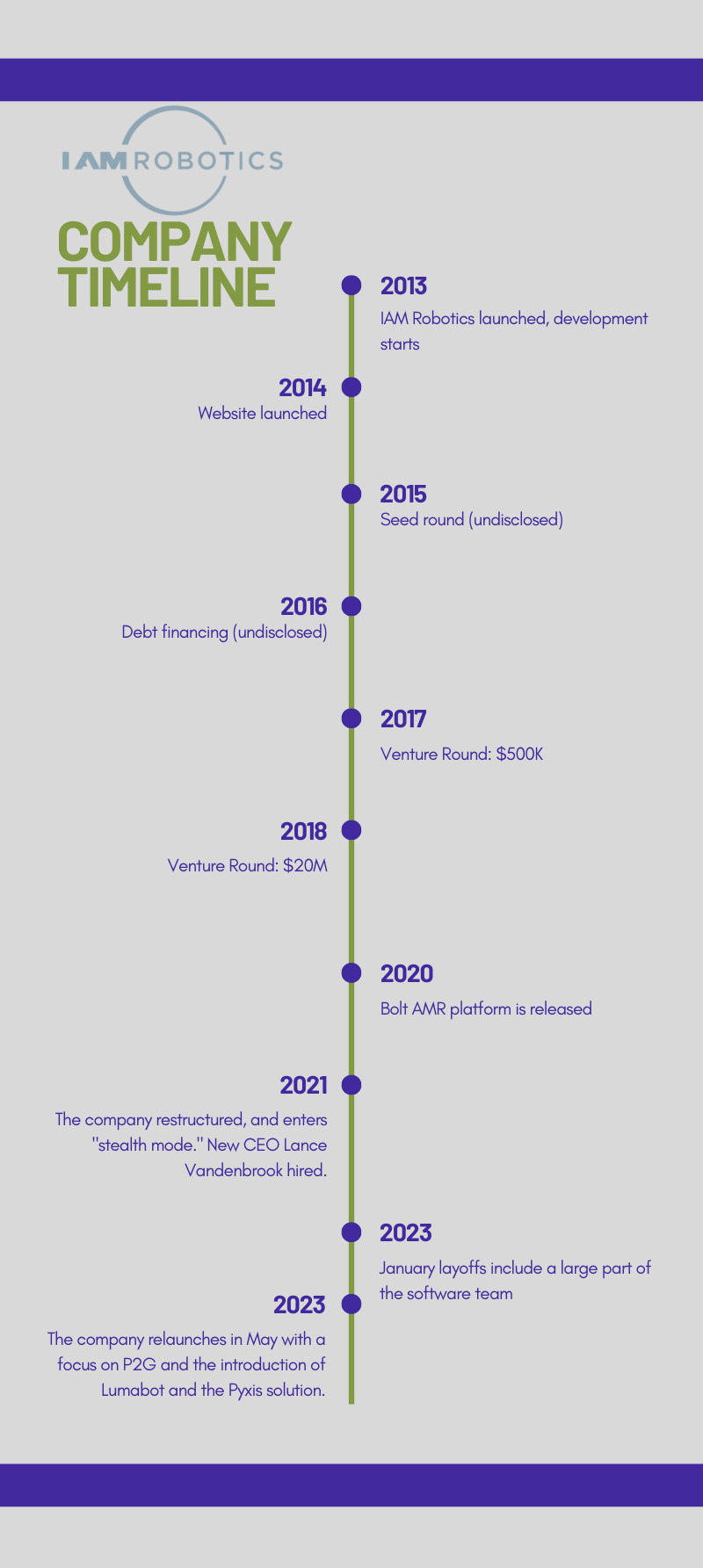
Credit: Source link


Comments are closed.